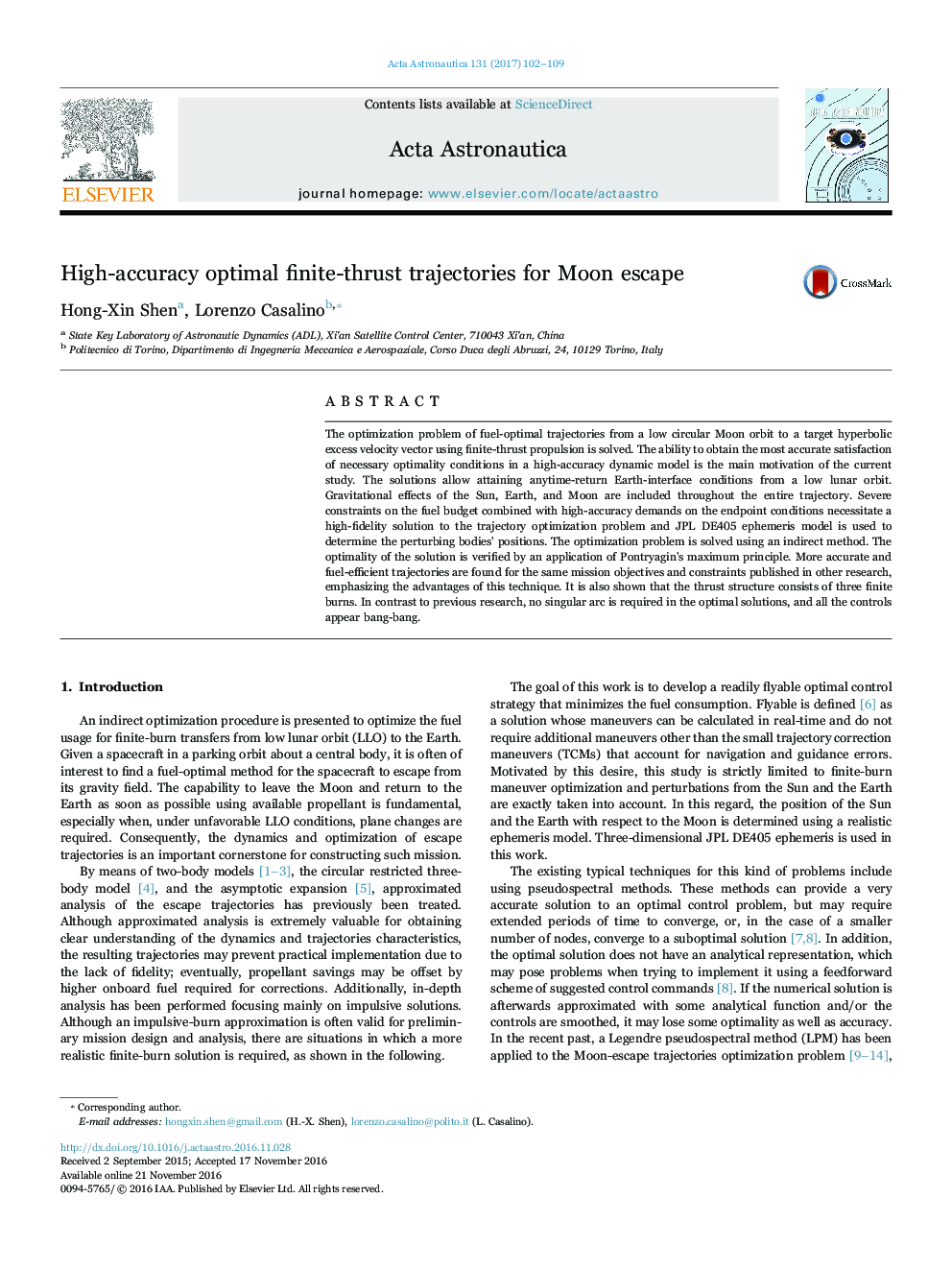| Article ID | Journal | Published Year | Pages | File Type |
|---|---|---|---|---|
| 5472203 | Acta Astronautica | 2017 | 8 Pages |
Abstract
The optimization problem of fuel-optimal trajectories from a low circular Moon orbit to a target hyperbolic excess velocity vector using finite-thrust propulsion is solved. The ability to obtain the most accurate satisfaction of necessary optimality conditions in a high-accuracy dynamic model is the main motivation of the current study. The solutions allow attaining anytime-return Earth-interface conditions from a low lunar orbit. Gravitational effects of the Sun, Earth, and Moon are included throughout the entire trajectory. Severe constraints on the fuel budget combined with high-accuracy demands on the endpoint conditions necessitate a high-fidelity solution to the trajectory optimization problem and JPL DE405 ephemeris model is used to determine the perturbing bodies' positions. The optimization problem is solved using an indirect method. The optimality of the solution is verified by an application of Pontryagin's maximum principle. More accurate and fuel-efficient trajectories are found for the same mission objectives and constraints published in other research, emphasizing the advantages of this technique. It is also shown that the thrust structure consists of three finite burns. In contrast to previous research, no singular arc is required in the optimal solutions, and all the controls appear bang-bang.
Related Topics
Physical Sciences and Engineering
Engineering
Aerospace Engineering
Authors
Hong-Xin Shen, Lorenzo Casalino,
